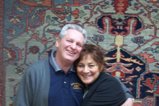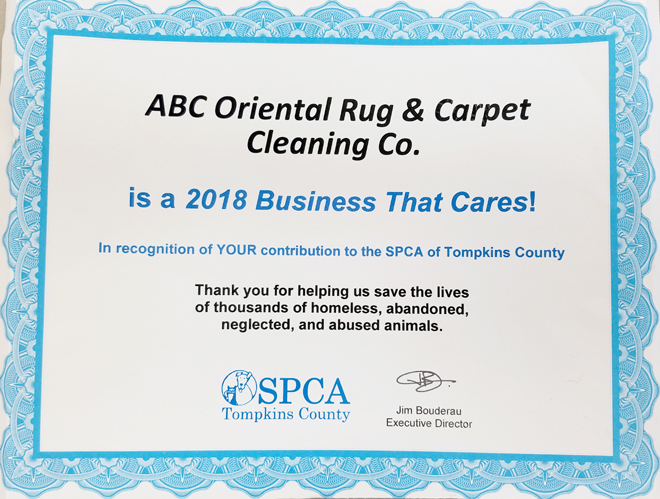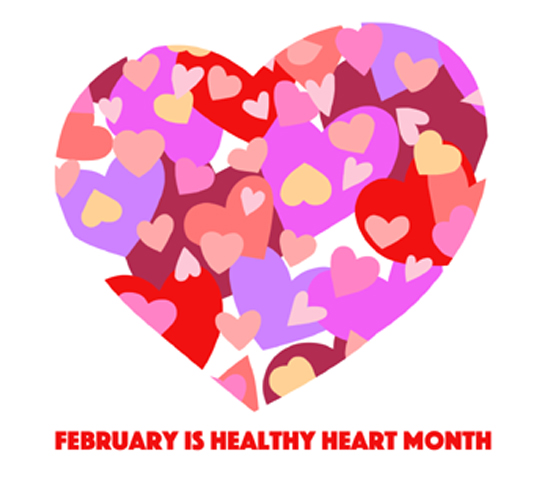ABC MONTHLY NEWSLETTER
FEBRUARY 2020
Welcome to Our Monthly Newsletter!
We hope you will enjoy this month's articles.
This month's topics are:
ORIENTAL RUGS
AREA RUGS
MISCELLANEOUS
If there is a topic you would like us to cover in one of our upcoming newsletters, please call us at
607-272-1566
or contact us by clicking here.
GREAT NEWS!
GOT QUESTIONS?
NOW YOU CAN TEXT US at
607-272-1566
REMINDER:
Don't forget to keep checking our website for our beautiful
You are always welcome to come in and check them out for yourself as well!
YAHYALI ORIENTAL RUGS
LOCATION
Yahyali is both a town as well as the southernmost district of the Kayseri Province of Turkey. The Taurus (Aladaglar) Mountains define its area and the Zamanti River crosses through it.
Recent years have seen the area of Yahyali become more of a tourist destination, featuring rafting on the Zamanti River and hiking in the The Aladaglar National Park.
Mining in the mountain ranges for the rich deposits of iron, zinc, and lead has been more intensive in recent years as well.
The Kapuzbasi waterfalls close to the center of the town, on the slopes of Aladaglar, has become enough of an attraction that it can now be found in guidebooks.
Agriculture and animal husbandry, along with the traditional handmade rugs, produced with natural dyes, are the main economic activities.
The languages spoken in Yahyali are Kurdish, Azerbaijani, Avaric, and Turkish. The Yahyali weavers produced very popular rugs of especially fine quality as are the Kayseri oriental rugs also made in the Province of Kayseri. They are well known for their weave and durability.
FOUNDATION OF YAHYALI RUGS
The Warp (up and down cords) and the 2 shoots of Weft (side to side cords), as well as the Pile, are all wool. The wefts are colored with madder (natural red dye).
The Knot is the symmetrical Turkish knot.
The Ends are varied with a single or multi-colored kilim (flat weave), a braided kilim, a looped fringe on one end or 1 or 2 ends braided.
The Sides consist of 2 cords overcast in wool.
The antique Yahyali rugs contain high quality wool, most of it spun locally. The weave is tighter than most Turkish village rugs and the rugs can be very shiny.
Contemporary Yahyali rugs
can seem to be a bit dull and scratchy to the touch, though with time
the colors may soften, as well as the wool.
DESIGNS OF YAHYALI ORIENTAL RUGS
Most
Yahyali oriental rugs, both antique and contemporary, feature a hexagon
or diamond medallion as the symmetrical main ornamental motif, often
with pendants (sometimes in the form of hanging lamps). The hexagon may
be single, double or triple.
The main border generally consists of stylized flowers and other geometric motifs.
Some Yahyali rugs contain the prayer design. The double horn pattern, symbolizing fertility, is also often used.
COLORS OF YAHYALI ORIENTAL RUGS
Please continue reading here for more information and photos of Yahyali Oriental Rugs.
BENEFITS OF AREA RUGS
The
benefits of area rugs in your home go far beyond appearance and style,
such as color, pattern, and texture (although those are definitely
important considerations).
For
example, an area rug does have the exceptional ability to bring the
decorative elements of a room together, such as pulling together all the
colors. This is an obvious benefit. They can be a great cover up for
tired and worn wall-to-wall carpet as well.
Even though area rugs can add many benefits to your home, if you have beautiful wood, laminate or tile floors, you may wonder why you should cover them up. Below are some more of the benefits of area rugs that can actually help to improve spaces in your home.
MORE BENEFITS OF AREA RUGS
SOFTNESS UNDERFOOT
Obviously, the softness of an area rug makes it more comfortable to stand or walk on than a hard surface floor. But that softness also gives it the flexibility to absorb some of the impacts of your footsteps, taking some of the pressure off your body.
NOISE REDUCTION
An area rug, especially with a pad underneath it, can notably decrease the noise in a room. Hard surface floors cannot absorb sound the way an area rug does because the area rug also absorbs sound from the air as well.
INSULATION
An area rug, especially when placed on a proper rug pad, is much warmer than hard surface flooring and offers a great insulating benefit.
ALLERGY RELIEF
Rugs in the home, as well as wall-to-wall carpets, trap allergens from the air. Allergens on hard surface flooring are constantly being recycled to the air where they can be breathed in. Rugs and carpets will hold those allergens until regular vacuuming takes place. The alleviation of some allergy symptoms can be a real benefit of area rugs in the home.
SPACE DEFINITION
An area rug has the ability to create a relaxed and comfortable space by helping to anchor the furniture in a room. This placement gives definition to the space, preventing the feel that the main pieces of furniture are just floating in the space. If a room is especially large, conversation areas can be defined by more than one area rug placement.
A SENSE OF CALM
Please continue reading here for more information about the benefits of area rugs in your home.
COLD WEATHER
HOW THE BODY WEATHERS WINTER
Cold weather can have a negative effect on our bodies and our health.
In the northeast, colder weather generally begins sometime in October. We naturally do everything we can to keep away the chill. We begin to add layers of clothing, heavy coats, and turn up the heat. Then suddenly, perhaps in February, the day turns sunny! Its 50 degrees and it feels marvelous. Turn down the heat! Go for a walk!
WHY DOES 50 DEGREES FEEL SO COLD IN OCTOBER BUT NOT SO MUCH IN FEBRUARY?
Physiologists can answer that question. They say the body adjusts to increasing cold over time. In October, our bodies just haven't adjusted to the temperature drop.
The human body has two main ways to cope with chills when the temperature drops:
- The first is to constrict blood vessels. This pushes warm blood to the body's core. That's when your arms and legs could start to feel colder.
- The second way is to shiver. That's when you turn up the heat 10 degrees.
Humans, it turns out, have continuously invented ways to cope with cold by changing their environment, such as turning up heat sources, staying near those heat sources, and adding layers of clothing.
WHAT ABOUT THOSE THAT SPEND THEIR ENTIRE LIVES IN COLD WEATHER?
Interestingly, humans who constantly experience cold weather, like
native people in the Arctic, just don't feel as cold as others.
Fish industry workers, whose hands are in cold water for hours, have been found to have warmer hands than other people.
The
physiological explanation is that blood vessels don't constrict so much
after long-term exposure. So those people really are warmer.
IS THERE A MEDICAL EXPLANATION FOR THE CHILL?
Yes, if you aren't an Eskimo and you do need thick, fuzzy socks all the time, there could be a medical explanation for the chill:
- The first medical
explanation is probably obvious. Aging makes people colder because
circulation decreases, the blood vessel walls lose elasticity, and the
fat layer thins. (Well, sometimes). Also, the body's metabolic responses
to cold can be slower in an older person. The Journal of Gerontology
has reported that older people, on average, had a body temperature .3
degrees lower than younger people. That is normal.
- Other medical causes of coldness can be hypertension, diabetes, and thyroid conditions, as well as high cholesterol.
- Pharmaceutical causes
includes beta blockers that decrease heart rate (and therefore,
circulation to hands and feet). Calcium channel blockers, used to treat
hypertension, can also contribute to the problem.
COLD WEATHER and INFECTIONS and ILLNESSES
When the temperature of our bodies is lowered, our noses are not as adept at fighting off infection and illness such as when a virus is breathed in.
We
also seem to make more mucus, even if we are not sick, when our body
temperature is lowered in the cold weather. This can lead to more
coughing and sneezing and a virus may attach itself to the mucus which
will make you ill. Excess mucus is one of the most common ways to spread
an illness.
COLD WEATHER and THE PROBLEM WITH INDOOR HEATING
Please continue reading here for more information about about cold weather and our health and especially the impact on our heart health.
HEART-LUNG MACHINES
Heart-Lung
Machines save hundreds of thousands of lives each year. For February,
Heart Health Month, here is the amazing story of the first Heart-Lung
machine and its inventor, Dr. John H. Gibbon Jr.
FIRST HEART-LUNG MACHINE
Almost sixty-seven years have
passed since the first successful heart-lung machine was used in
surgery. Unfortunately, generations of people have little memory of what
a diagnosis of heart problems once meant.
In those days, there were no
real therapies for heart problems. A patient could possibly have an
operation, but it wasn't likely that he or she would survive it.
Then, on May 6, 1953, an
18-year-old woman survived open heart surgery and recovered. Her surgery
was an experiment 23 years in the making and the result of the singular
vision and
struggle of Dr. John H. Gibbon, Jr.
DR. JOHN H. GIBBON, JR.
The struggle began in 1931 when, as a surgical resident, Gibbon was
assigned to monitor a young woman who, two weeks after surgery,
developed a blood clot that went to the heart. During a long night,
Gibbon watched as she progressively became worse. Her heart and lungs
could no longer provide oxygen to her blood.
That morning, Gibbon observed as a surgeon attempted to remove the blood clot during open-heart surgery. The operation was an act of pure desperation. Open heart surgery prior to 1953 could occur only two ways, either by placing the patient into a hypothermic freeze, or by stopping the heart (and respiration) and working fast. Surgeons could make repairs in six minutes or so, but patients rarely survived.
Prior to 1953, no patient in the
U.S. had ever been known to survive the removal of blood clots and
neither did the sick young woman on the operating table that day in
1931.
But in that moment, Gibbon had an insight: Blood
must be circulated and oxygenated by a machine outside the body while
the surgeon worked inside the body. But what would serve as the pump?
How would you provide the blood to the patient?
During
the next 23 years, Gibbon and his wife/assistant worked on the idea,
solving all the major problems associated with using a mechanical pump
to bypass the heart. They had no big government grants but
unfortunately, they had plenty of opponents and naysayers.
Then
on that day in May of 1953, at the Jefferson Medical College Hospital,
Gibbon tried out his new bypass machine, operating on an 18-year-old
woman. Assistants watched in awe as the impossible happened and the
patient lived through a once-impossible surgery.
She
was connected to the device for three-quarters of an hour and for 26
crucial minutes, the patient totally depended upon the machine's
artificial cardiac and respiratory functions.
Following
the operation, Dr. Gibbon told his biographer he felt exhilaration,
relief, and joy. He was so overwhelmed that for the first time in his
life he couldn't even sit down to write down his own operation notes.
Another doctor had to supply the notes.
Dr. Gibbon went on to perform four more operations, all on children, but all the patients died. After those four failures, he declared a moratorium on the procedure. He never again went back to heart surgery.
HEART SURGERY THROUGH THE YEARS TO THE PRESENT
To
find out more information on this subject as well as a video with Dr.
Oz performing open heart surgery, please continue reading here.
LEAP YEAR
THE SCIENCE BEHIND
LEAP YEAR
This year,
2020, is a leap year with Leap Day being February 29, 2020. So perhaps
it is time to review the science behind Leap Year and Leap Day.
The science is
actually pretty simple. Most of the world uses the Gregorian calendar
(also called Western or Christian calendar) after it replaced the Julian
calendar and its inaccuracies. It was Pope Gregory XIII who first
coined the phrase 'Leap Year.'
The 365 days
are divided into 12 months and divided into 30 or 31 days, except
February, which has 28. Well, except for Leap Year, when it has 29. You
may remember the rhyme--Thirty days hath September, April, June, and
November, etc.
The extra day
was added to February, because it had fewer days after the adjustments
were calculated by how long it takes the earth to go around the sun.
That trip takes five hours, 48 minutes and 45 seconds longer than 365
days. If the solar year can be divided by either 4 or 400, it's a Leap
Year.
Leap years add a couple seconds per year over time, adding up to 3 extra days over 10,000 years.
An added perk for 2020...Most major holidays are on Friday and Saturdays!
LEAP YEAR LORE
All sorts of folklore, superstitions, and traditions have developed over the past 2000 years:
- The frog is a symbol associated with February 29th.The Australian Rocket Frog can leap over 6.5 feet!
- Greeks considered it unlucky to propose or marry in a Leap Year and the Scots deemed it unlucky to be born on Leap Day.
- Scottish farmers believed leap years were not good for farming and livestock, partly due to the old proverb: 'Leap Year was Ne'er a Good Year.'
- In several European countries, Leap Day was called Bachelor's Day. Any man who refused a woman's proposal paid a penalty of 12 pairs of gloves, one for each month to hide her embarrassment of a bare engagement finger.
- An old Irish legend says women can propose to their significant other on a leap day.
- Sadie Hawkins Day, from Al Capp's long running 'L'il Abner' cartoon is hardly remembered today. A character in the series was the Mayor of the town of Dogpatch. He wanted to marry off his ugly daughter (Sadie Hawkins) so he created Sadie Hawkins Day. A race would be held on this day. The single boys would be given a head start and then the single girls would chase the boys and if a girl caught her boy, he had to marry her.
LEAPLINGS and LEAPERS
For more information, please continue reading here.
FEBRUARY SPECIALS
It's the SECOND Month of Our
Regular Customer Appreciation Discount (RCAD)
All Month Long...
20% Off
All Wall-to-Wall Carpet Cleaning
&
30% Off
All Upholstered Furniture Cleaning
AND
Pay with Cash or Check
for an extra
5% Off!
PLUS
More Cleaning Specials &
Extra Savings for
YOU
and Your Family & Friends!
Please call our office at
607-272-1566
for details!
For info on RCAD,
please click here.
THANK YOU!! WE LOOK FORWARD TO CONTINUING TO SERVE YOUR TEXTILE CLEANING AND REPAIR NEEDS!
Get New Posts Right To Your Inbox!
Get our monthly newsletter, just like this one, delivered right to your inbox each day. Just sign up and we will send you the best new articles and videos as they become available.
Your email address will NEVER be spammed, sold, or shared. You are welcome to unsubscribe at any time with the link in the email.
"The Cleanest Clean You've Ever Seen."
by
ABC Oriental Rug & Carpet Cleaning Co.
130 Cecil Malone Drive Ithaca, NY 14850
607-272-1566

ABC
Carpet & Rug
Spotting Guide

ABC Oriental Rug & Carpet Cleaning Co. has been family-owned and operated in Ithaca and surrounding areas for more than 48 years.
Our company is a reflection of our family name and pride.
Please Like us on Facebook!
for more information and to find out what we are doing at our business and in the community!
Stay Connected!
Links to Our Services
Allergy Cleaning
Area Rug Cleaning
Oriental Rug Cleaning
Rug Hand & Machine Repair
Upholstered Furniture Cleaning
Tile & Grout Cleaning & Sealing
We are proud sponsors of the SPCA of Tompkins CO:

Newsletter Archives


